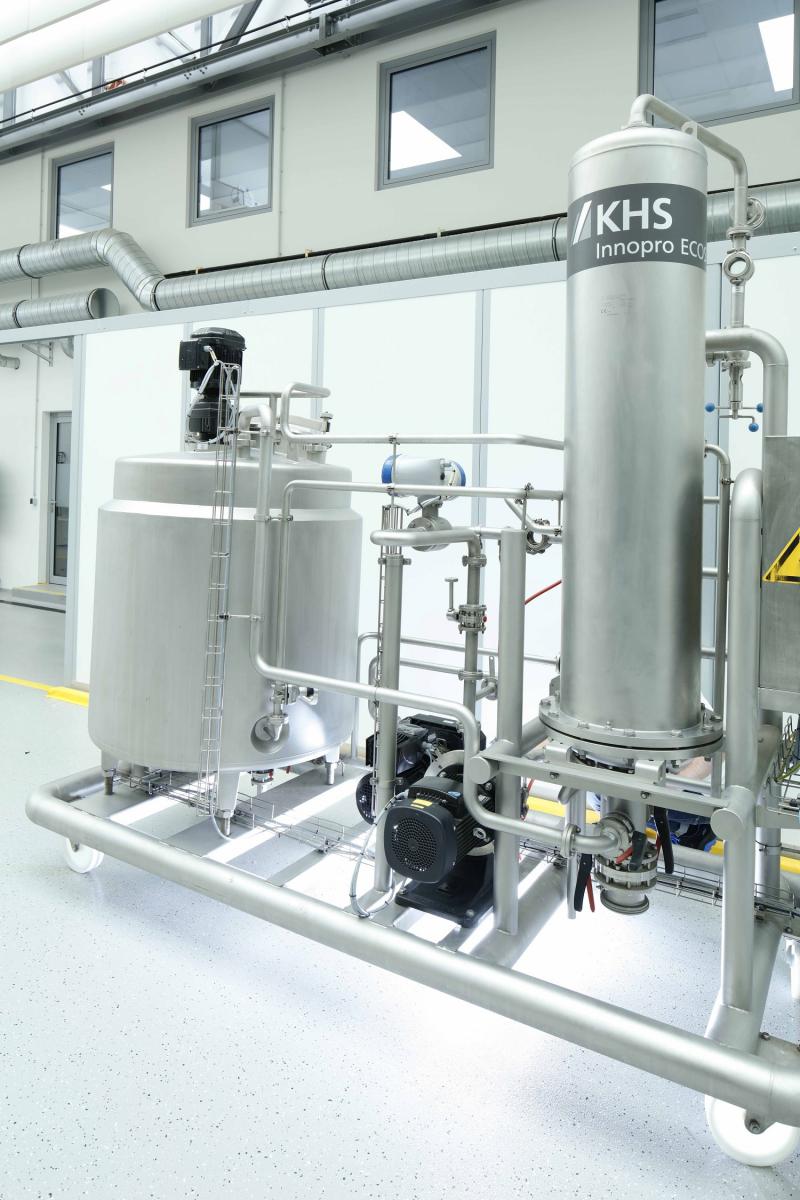KHS' regenerative beer stabilization is now available for smaller breweries with yearly outputs of up to 70,000 hectoliters. The youngest member of the ECOSTAB family, presented at the BrauBeviale has a movable base, the Innopro ECOSTAB S can be flexibly integrated into the production process. In addition, the stabilizing system is characterized by low media consumption and cost of investment.
Even if the best before date on beer bottles suggests otherwise, beer does not spoil. "It simply changes," says Gerold Tandler, head of Product Management Process Technology at KHS. "After awhile, haze substances and small lumps form which are often thought to be yeast but in fact are primarily compounds of protein and polyphenols[1]. They form large agglomerates that precipitate in the bottle and then become visible." They have a negative effect on buying behavior. For this reason, beer that has been transported a long distance or stored for a long period must be stabilized.

Innopro ECOSTAB S stabilizing system
Low media consumption and reliable production
KHS' Innopro ECOSTAB product line offers regenerative stabilization using polyvinylpolypyrrolidone [2](PVPP) for this purpose. This process removes some of the haze-forming polyphenols from the beer. First, a frequency-controlled pump doses PVPP into the product line. The beer is then stabilized in a small module where the PVPP is retained by bound tannin molecules. "Since the PVPP doesn't remain in the beer, the result is low mixing phases, low media consumption and reliable production," explains Tandler. The PVPP in the modules is then regenerated and returned to the dosage tank where it is ready for the next stabilization cycle. Regeneration improves the use of raw materials significantly.
To date, this technology was intended for large and medium-sized breweries: developed for continuous stabilization, the Innopro ECOSTAB C with an output of 150 to 600 hectoliters per hour is ideal for companies with an output of more than 400,000 hectoliters per year. The Innopro ECOSTAB B stabilizes between 50 and 240 hectoliters per hour in batches and is thus the suitable solution for companies with yearly outputs of more than 50,000 hectoliters.
Easy to use, less expensive to buy
But KHS technology is highly relevant even for many smaller brewers with yearly outputs from 10,000 to 70,000 hectoliters or breweries that only want to stabilize a small part of their production. "In the southeastern part of Bavaria where I come from, for example, there are a large number of companies of this kind," says Tandler. "The lion's share of their production is sold in town - that is locally - and drunk within a short time. However, the breweries export some of their beer - to Italy, for example - which makes stabilization unavoidable."
With the Innopro ECOSTAB S, KHS now offers its customers its tried-and-tested solution in a smaller size that is easy to use and carries a small price tag. Thanks to its compact design and its movable base, the Innopro ECOSTAB S is mobile and can be flexibly integrated as required into the production process. Brewers are able to decide which share of their beer to stabilize - and which not to stabilize. Milk pipe fittings are used to connect the machine. "Everything that is required for stabilization under constant conditions is located in the system itself," emphasizes Tandler. No additional equipment is required and the simple and the fully manual operation eliminates the need for any integrated software. The Innopro ECOSTAB S additionally features low media consumption and low cost of investment, which usually means a return on investment in less than two years.
[1] Polyphenols: aromatic compounds, for example, as bioactive secondary plant ingredients from malt and hops.
[2] Polyvinylpolypyrrolidone: food additive (E 1202) used as a technical additive in the beverage industry.
New Balance

 iConnectHub
iConnectHub
 Login/Register
Login/Register Supplier Login
Supplier Login



























